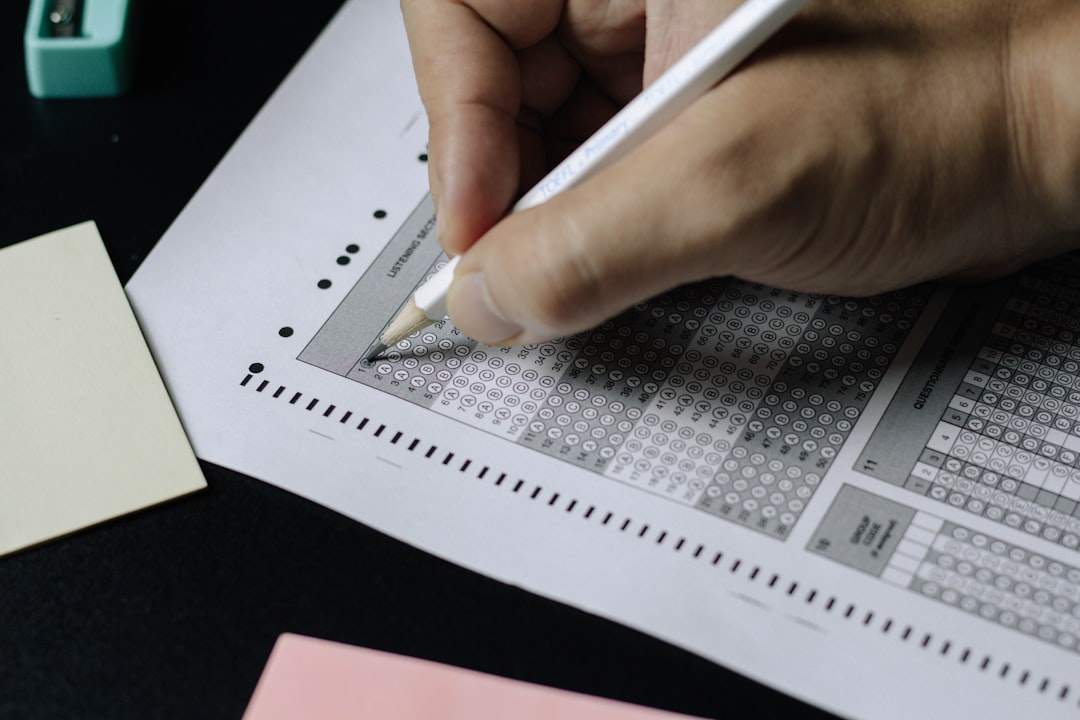3 Ways to Master the SAT Writing and Language Test
Many of the questions on the SAT Writing and Language Test are not in traditional question form.
This means you will not be given entire passages on the go that you need to skim through before you attempt the questions. This is a good thing because it means you can slightly ease your anticipations regarding time management.
What you will get instead is a series of passages consisting of underlined portions, and you will need to determine whether these underlined portions are correct, or whether they will need to be replaced with one of the answer choices.
Before we continue, as you might already know, questions on the SAT Writing and Language Test fall into 4 total reading passages, which are presented to you in segments. Each passage will contain 11 questions, totalling 44 multiple choice questions, for which you will get 35 minutes. I tell you this because in order to master the SAT, you need to know how it works.
1) Getting to know the Writing test
The Writing section will be testing a variety of segments that require fuller knowledge of the English language, and so the passages will vary in purpose, subject and complexity.
However, it is important to keep in mind that the College Board has designed the questions on the test to reflect the decisions that writers and editors make on a daily basis, and that you will have to make as you continue with your education. So keeping the theoretical factor aside, the test can be boiled down to only 2 simple question types.
a) Improvement Questions
Around 55% of the questions in the Writing test are related to the structure, the style or the precision of the passage. These questions don't ask you to fix any grammatical errors - what they will ask you to do is to improve the quality of the passage, and give more clarity to the message the passage is supposed to be conveying.
These questions will be focusing on the rhetorical elements of the passage - so you are asked to essentially improve the substance and quality of the writer's message. You might be asked to improve precision, to consider style and tone, or to combine sentences to improve the flow of the passage and achieve a particular rhetorical intent.
b) Correction Questions
Likewise, around 45% of the questions in the test are related to grammatical intent, where you will be asked to locate and fix grammatical errors within the passage. For these, a strong understanding of English grammar, and the ability to spot grammatical mistakes are extremely important for mastering the Writing and Language Test.
In particular, these questions will be focusing on recognising and correcting grammar, usage and mechanics problems in the passages. More specifically though, what these questions are doing is not just ticking off items on a long list of grammar, usage and mechanics rules in the English language - it is also closely tied to the meaning that a writer wishes to convey with their message.
Before we move on, I would like to tell you that the SAT English section is a tough nut to crack, and if you require assistance with your theoretical or practical knowledge in order to take the examination with complete confidence, skip ahead to the very end, or click here to get access to resources and guidance.
Now that you have a good idea of what to expect with this condensed version of the Test's questions, you can begin to understand in the sections below how you can tackle the more individual questions as you see them.
Photo by Nguyen Dang Hoang Nhu / Unsplash
2) Narrowing the questions down
On the whole, the Writing and Language Test will test your knowledge across numerous grammatical and stylistic concepts, however, each multiple choice question will be likely testing only one or two concepts.
When you are practicing for the SAT or sitting through your actual examination, your best bet is to determine the exact concept or concepts that are being tested in your questions.
If you do this, it will give you the opportunity to apply appropriate rules and strategies while you determine the answer, instead of being stuck with guesswork as you pick your answers. Avoid guesswork! Let's look at a few things you can keep in mind as you approach each question.
a) The underlined text
The underlined text is your priority, and it contains the key to the correct answer.
If the underlined portion is a full sentence, the question in relation to it will most likely be testing your knowledge of sentence structuring, your organisational abilities, or your aptitude to edit texts with clarity.
On the other hand, if the underlined portion is only a word or a phrase, you can determine that it is more likely to be testing vocabulary.
However, this is not a given. This is just one of the ways in which you can determine the manner of the question, and what it specifically aims to test. With practice, the SAT format, and the nature of the questions on the SAT will slowly become familar to you.
b) The answer choices
Yes, the answer choices, especially in the Writing and Language test, are a big giveaway to the type of question that is being asked - the options in the Writing test are much more explicit than the ones in the Reading test.
Before selcting your answer, look carefully at all of your given choices. Determine what part, or parts of the answers, are changing from one choice to the next.
For example, if one of the options are displaying a comma, while another displays a semi-colon or a colon, it is certain - the question is explicitly testing punctuation. Once you have determined the concept, the rest of it is simply theoretical, giving you the ability to quickly move on to the next question.
c) The rest of the paragraph
You don't need to do this for each question. Just make sure you skim through the entire paragraph, or the passage as a whole, before you begin.
Try to use the passage as a whole, and especially the sentences just before and after the underlined portions, so you are completely sure as you double-check your answers. This is just to ensure that the choice you pick is falling in line with the overall context of the paragraph or the passage.
Once you determine the concept, or concepts, that are being tested in your questions, you will know how to appropriately use the knowledge you have!
However, while is it important to keep guesswork in the back seat, and attempting your questions with surety, sometimes you might find youself slightly stuck, as you are looking at the answer choices. What is the best way to proceed?
Photo by Green Chameleon / Unsplash
3) Using the process of elimination
To minimise confusion, quickly eliminate the answers choices which you know are extremely unlikely to be true. This is the strategy of making an educated guess.
If you can eliminate at least one answer choice that you are sure is wrong, you will be narrowing the answer down for yourself, and ensuring that you are not guessing at random. If you are able to eliminate two answers straight away, it is even better.
You might also find yourself facing an answer that you are having a bit of trouble solving. Try to not leave the answer blank, do the guessing anyway!
Remember, the new SAT pattern from 2016 contains no penalization for picking the wrong answers, so making educated guesses based on your theoretical knowledge is a very good strategy to have.
However, you might have understood that the key to easily getting a great score lies in your theoretical understanding of the subject, and knowing how to practically apply that knowledge as soon as you encounter the various questions.
While you revise, review your knowledge of the rules of the English language, or find someone who can give you what you need, in terms of handy resources, expert guidance and new practice tests.
Over the years, we have observed that a lot of students score below 580 for their SAT Reading and Writing. The weird part is, it's almost certain that a student who scores above 400 with no guidance at all, can easily score between a 600 and a perfect score, with guidance from an expert.
Wonder why? Because you already have all the thinking skills you need! You just need an expert to help you shape it in order to reach the critical ability which the College Board requires you to have. Click here to get in touch with one of those experts, and transform your SAT score in just a few weeks.
We have some of the best SAT experts, handpicked from across the globe, who will guide you and provide a tailor-made curriculum for your needs, according to your strengths and weaknesses. Track your grade with us as your score improves and find yourself fully prepared before you enter the exam.

